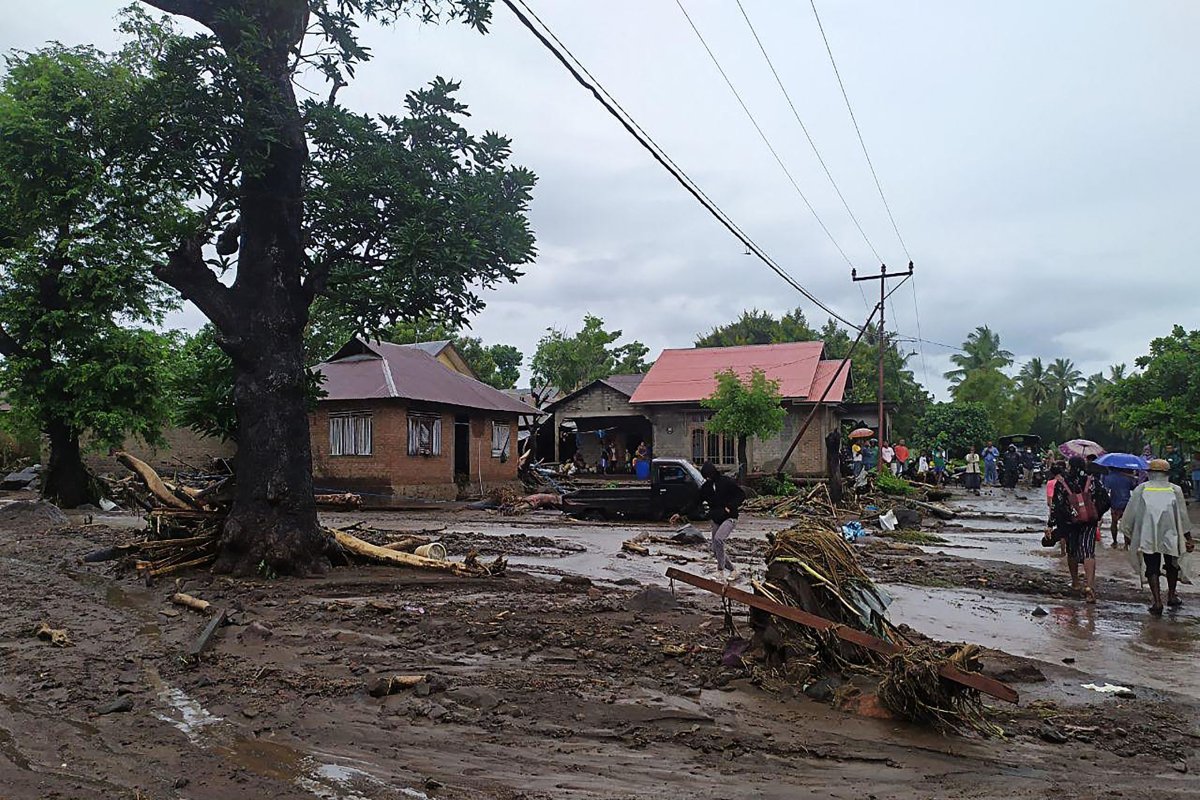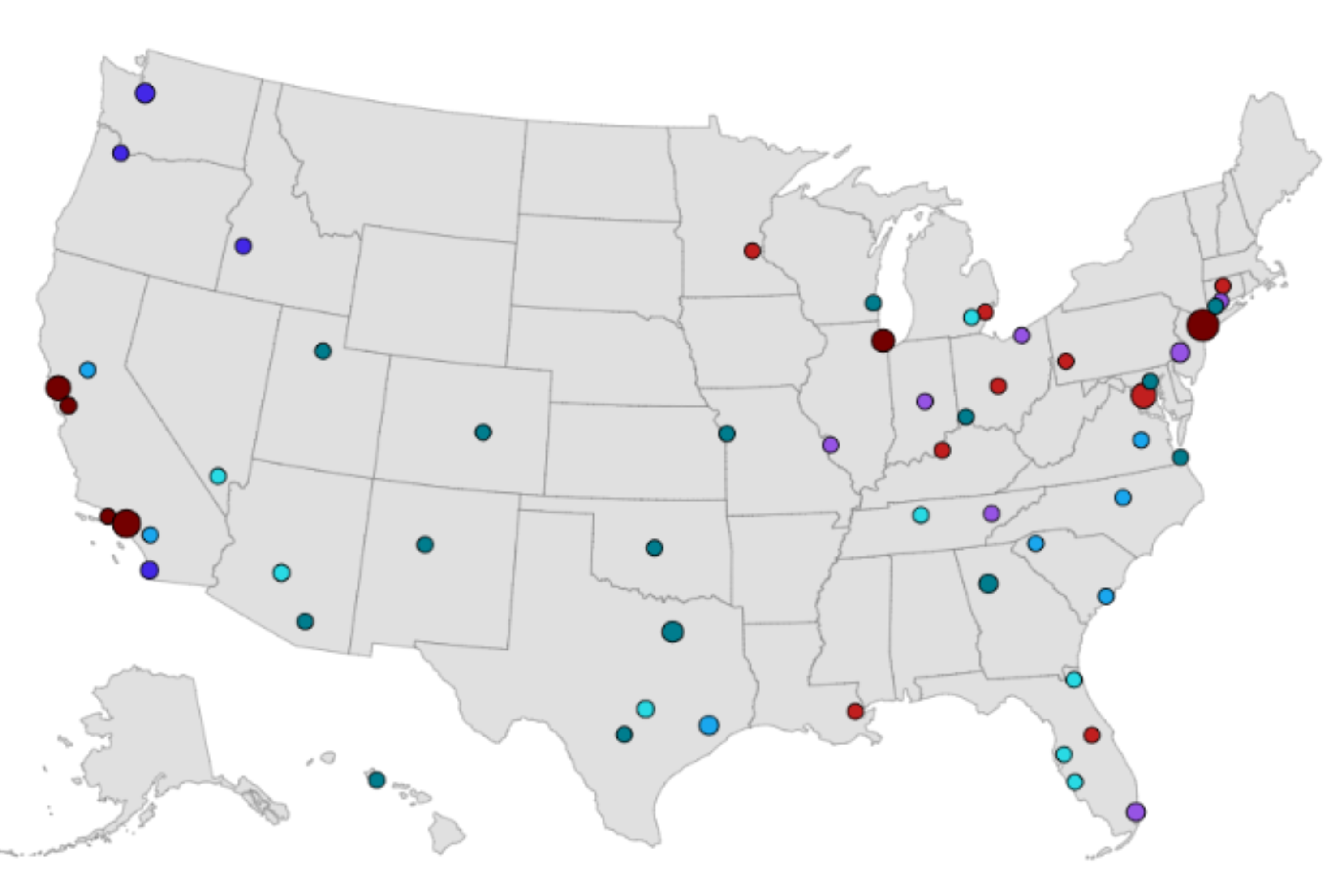There were at least 160 deaths reported in Indonesia and East Timor as the region is battered by the Tropical Cyclone Seroja.
According to the Associated Press, there were at least 133 reported deaths in Indonesia and 27 in East Timor, while dozens of others remain missing, as a result of the tropical cyclone.
Homes and buildings across the nation also suffered damage from the severe weather conditions, and the Associated Press reported that damages caused by the storm are expected to continue over the next few days across other areas in Southeast Asia.
In response to the extreme weather conditions, Indonesian President Joko Widodo, ordered the military, local police and disaster agencies to execute emergency response measures to help aide people that were injured or reported missing due to the tropical cyclone.
"I can feel the grief of our brothers and sisters there caused by these disasters," Widodo said in a televised address to the nation, according to the AP.

For more reporting from the Associated Press, see below.
Mud tumbled down from surrounding hills onto dozens of homes in Lamenele village shortly after midnight Sunday on Adonara island in East Nusa Tenggara province. Rescuers recovered 49 bodies and 28 people were seriously injured, East Nusa Tenggara Vice Governor Josef Nae Soi said at a joint news conference late Monday.
Flash floods killed at least 84 people elsewhere and 71 were still missing in the province, local leaders said at the virtual news conference. Severe flooding also was reported in Bima, a town in the neighboring province of West Nusa Tenggara, killing two people and submerging nearly 10,000 houses.
Relief efforts were hampered by power outages, blocked roads covered in thick mud and debris, as well as the remoteness of the area on an island that can only be reached by sea which is now surrounded by high waves, said the agency's spokesperson, Raditya Jati.
Photos released by the agency showed rescuers taking residents to shelters.
The bodies of 13 people were recovered after being swept away by floods in Alor district, where dozens houses were destroyed, Soi said. Hundreds of people fled their submerged homes, some of which were swept away by the floodwaters.
In another district, Ende, two people were killed after overnight rains caused rivers to burst their banks, sending muddy water into large areas of East Flores district, Soi said.
The rains also caused solidified lava to tumble down the slopes of Ili Lewotolok volcano and hit several villages. That disaster on Lembata island killed at least 67 people buried under tons of solid lava, Lembata district chief Eliaser Yentji Sunur said at the same news conference. The lava was left after the volcano erupted in November.
Hundreds of people were involved in the rescue efforts on Monday. Ten districts and the provincial capital of Kupang were affected by flash floods and a landslide that damaged five bridges and several public facilities in East Nusa Tenggara province, Jati said.
He said more than 950 houses were damaged, including dozens that were flattened or swept away by floods and mud, forcing 2,655 people to flee to government shelters.
In East Timor, 13 people were killed in the capital, Dili, and at least 14 bodies were recovered elsewhere in the tiny nation as rains caused landslides and dams to overflow. "We are still searching for the areas impacted by the natural disasters" and the toll could rise, said Joaquim José Gusmão dos Reis Martins, the nation's secretary of state for civil protection.
East Timor President Francisco Guterres Lu Olo offered his condolences to the victims and asked government officials to coordinate the response.
At least eight people were reportedly still missing and about 8,000 displaced people were evacuated to temporary shelters run by the country's Red Cross, said government spokesperson Fidelis Leite Magalhaes. He urged shops and markets to immediately reopen and people to return to their normal activities.
Tropical Cyclone Seroja has produced high waves, strong winds and heavy rains for the past three days and its effects are expected to last until Friday, said Dwikorita Karnawati, head of Indonesia's Meteorology, Climatology, and Geophysical Agency.
She warned that the cyclone could trigger waves up to 4 meters (more than 13 feet) on Sumba, Flores and Rote islands in East Nusa Tenggara province and up to 6 meters (19.6 feet) in the southern part of the province and in the Banda Sea and Indian Ocean.
Authorities were still collecting information about the full scale of casualties and damage in the affected areas, Jati said.
Seasonal rains frequently cause flooding and landslides in Indonesia, an archipelago of 17,000 islands where millions of people live in mountainous areas or near fertile flood plains.
Australian forecasters have warned residents in Western Australia state's far north that the tropical cyclone was intensifying and moving toward them.
Seroja, or lotus flower, formed early Monday morning in Indonesian waters and was moving southwest, Australia's Bureau of Meteorology said. It's not expected to affect Australian communities for the next 48 hours, but residents were urged to monitor forecasts.
Uncommon Knowledge
Newsweek is committed to challenging conventional wisdom and finding connections in the search for common ground.
Newsweek is committed to challenging conventional wisdom and finding connections in the search for common ground.
About the writer
Matthew Impelli is a Newsweek staff writer based in New York. His focus is reporting social issues and crime. In ... Read more
To read how Newsweek uses AI as a newsroom tool, Click here.








